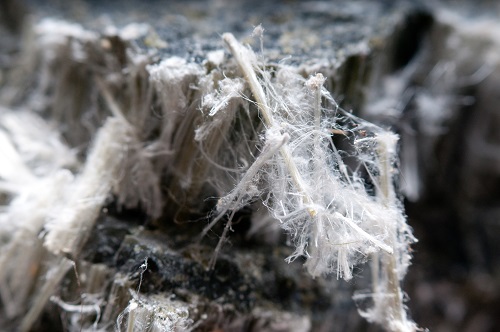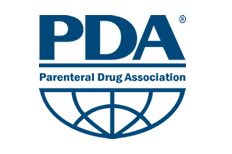ASBESTOS EXPOSURE DANGER - 4 SURPRISING WAYS IT CAN HAPPEN
February 1, 2023 | Cleanroom Supplies Blogger
 Welcome to our Guest Blog, featuring author Devin Golden – content writer for the Mesothelioma Guide; an advocacy organization dedicated to help inform the public about the dangers of environmental asbestos exposure, as well as dangers of this rare and aggressive cancer caused by the substance. Find out more here.
Welcome to our Guest Blog, featuring author Devin Golden – content writer for the Mesothelioma Guide; an advocacy organization dedicated to help inform the public about the dangers of environmental asbestos exposure, as well as dangers of this rare and aggressive cancer caused by the substance. Find out more here.
Asbestos Exposure has no limitations. It can happen nearly anywhere, mostly due to it being used in many applications for decades.
Here’s a scary thought: Your own home may contain this cancerous substance.
Asbestos exposure at home can occur in older houses, particularly those built prior to the 1980s. The substance, which is the only scientific cause of mesothelioma, could be in old kitchen appliances, hiding in your walls, or sitting on your roof shingles. It could also be in old furniture and has even been discovered in the past inside that bottle of baby talcum powder!

If you’re diagnosed with mesothelioma and don’t know how you were exposed, consider contacting one of the team at the Mesothelioma Guide. Our patient advocate and registered nurse, Karen Ritter, can help you learn about your cancer, including how it came to be. Contact her at [email protected].
Continue reading and find out 4 ways that Asbestos exposure commonly occurs in home environments.
1. Asbestos Exposure – Home Appliances
Asbestos was a fire-resistant substance with the ability to preserve household components for decades. Any appliances at risk of catching on fire or heat damage were obvious choices for the inclusion of such a substance.
These appliances filled many homes with the potential for secondary exposure. They include:
- Dishwashers
- Washer and dryer machines
- Toasters
- Baking ovens
- Oven mitts
- Stoves and stovetops
- Electrical sockets
- Hairdryers
- Heaters
- Lamp wicks
- Ironing boards
2. Asbestos Exposure from Renovation Projects
During the middle of the 20th century, new homes lined the streets of up-and-coming neighbourhoods. Some decades later, those homes no longer have their “new” label.
They’re old, classic homes in need of renovation. The paint-chipped walls, deteriorating foundation and mold-infested ceilings are signs of a much-needed rehabilitation. However, any attempt to make an old home look new again could be dangerous.
Renovation projects open up doorways for dangerous asbestos exposure. “Legacy asbestos exposure” refers to the presence of old, deteriorating asbestos in older buildings. Tearing down walls, replacing or even power washing roof shingles, eradicating mold, and more home-renovation work can disturb this already-delicate legacy asbestos.
Any disruption can send sharp fragments into the air. Since renovation jobs often require breathing in tight, asbestos-filled spaces, working without PPE can lead to potentially deadly exposure. Always ensure that the correct PPE is used.
3. Asbestos Exposure – Health and Beauty Products
While asbestos is mostly phased out of commercialism, it can sneak into products that include neighbouring minerals as an ingredient. A perfect example is Talc.
Talc and asbestos often share the same geographical areas, which means they can mix during mining procedures. Talc is ground into a powder, called talcum powder, to absorb moisture and keep skin healthy. It is used in cleaning powders, cosmetics and more. However, loose asbestos strands may contaminate the powder, putting consumers at risk. In recent years, talc products like Johnson & Johnson Baby Powder have emerged as potential home exposure methods. Exposure from talc products has caused an uptick in women with mesothelioma. Avoiding any powders that include talc is recommended.

4. Workers Bringing Asbestos into the Home
During the 20th century, one of the most common at-home exposure causes involved transferring loose fibres from one person to another. Workers in at-risk occupations — building construction and insulation, automobile repair, electrical work and more — would unknowingly have the fibres dust stuck to their clothes, skin or hair.
Their families could be exposed by hugging the worker, touching the same household objects or spending time close to each other.
While most industries no longer use asbestos, any repair or renovation jobs can put workers at risk. There’s still a chance of bringing “legacy asbestos” from buildings or vehicles into the home.
Unfortunately, due to the microscopic size of the fibres, it’s nearly impossible to tell at the moment you’re exposed. The most crucial safety precaution to take is awareness.
We hope that knowing where asbestos may be present will encourage you to replace old appliances, hire professionals for renovation work, avoid using talc-based products, and wear the correct PPE in at-risk jobs. (View Cleanroom Supplies’ range of PPE for Asbestos Removal here).
About the Writer, Devin Golden
Devin Golden is the content writer for Mesothelioma Guide. He produces content on various mediums, including the Mesothelioma Guide website and social media channels. Devin’s objective is to translate complex information regarding this rare and aggressive form of cancer into informative, easily absorbable content to help patients and their loved ones.
If you would like to write an appropriate guest blog, please email us at [email protected] or complete the form on or website contact us page.
Read More from Cleanroom Supplies:
An Overview on Safely Removing Asbestos
Asbestos Contamination Awareness | My Story
Asbestos – 8 Facts You Should Know! Some of these will shock you.












